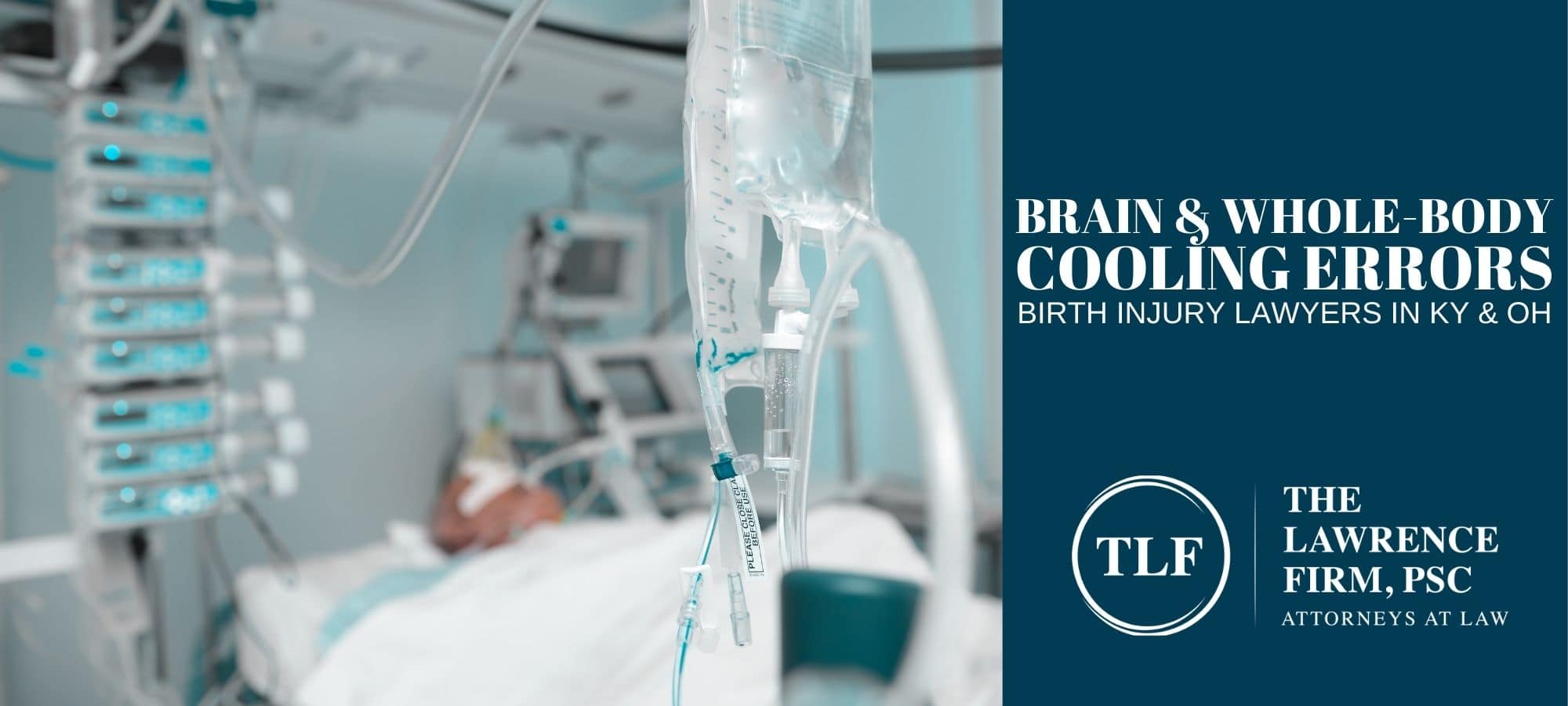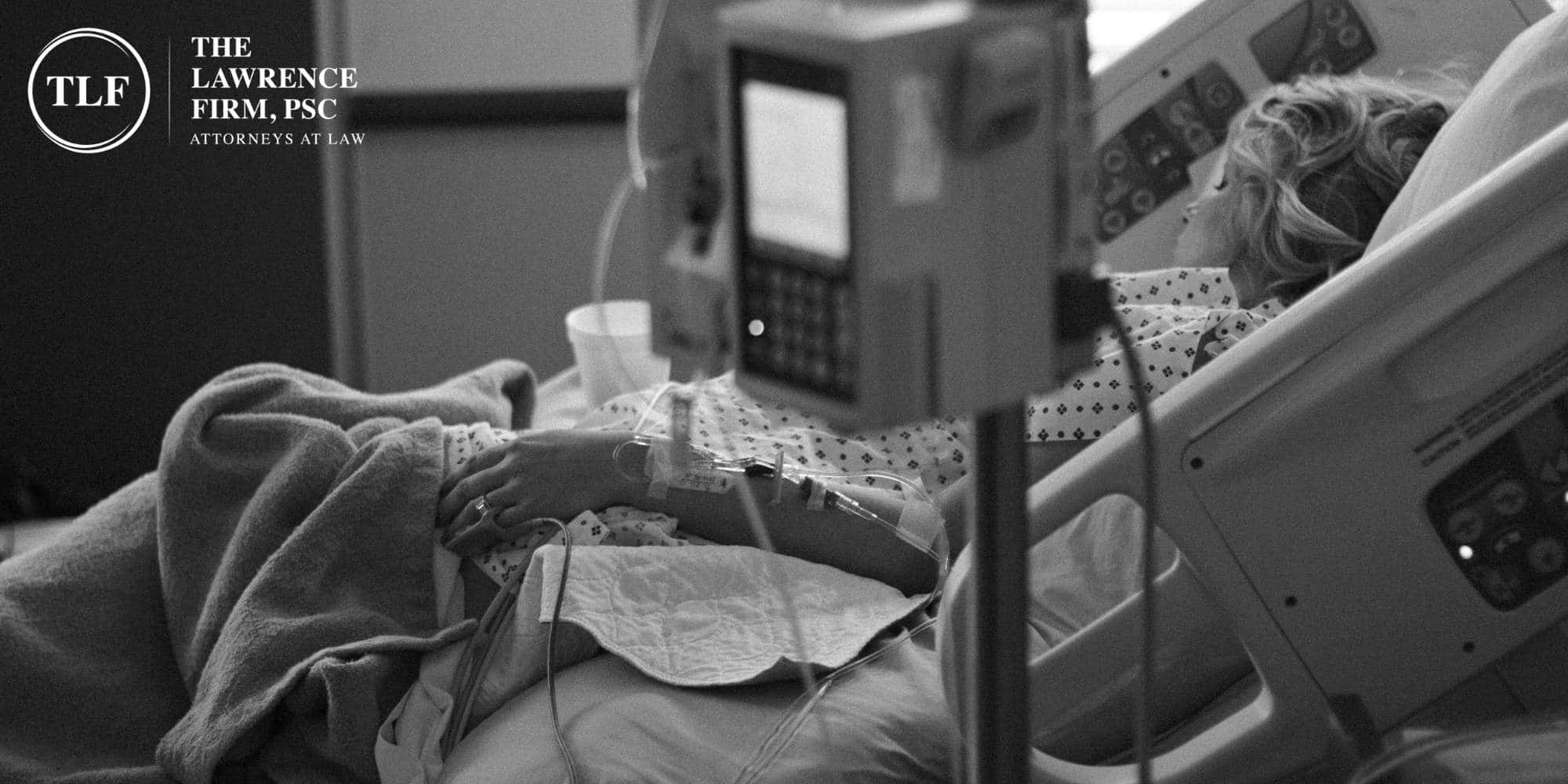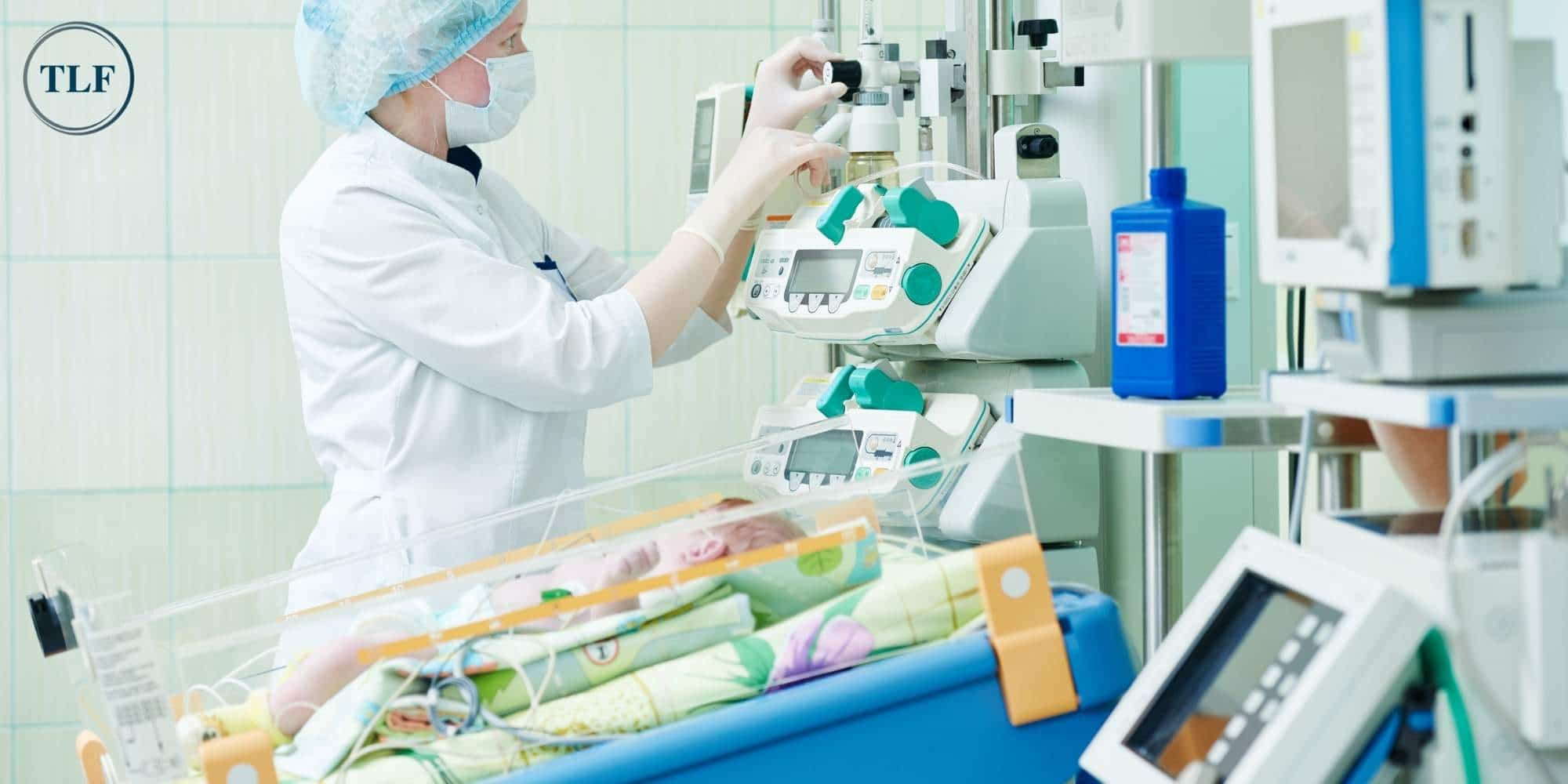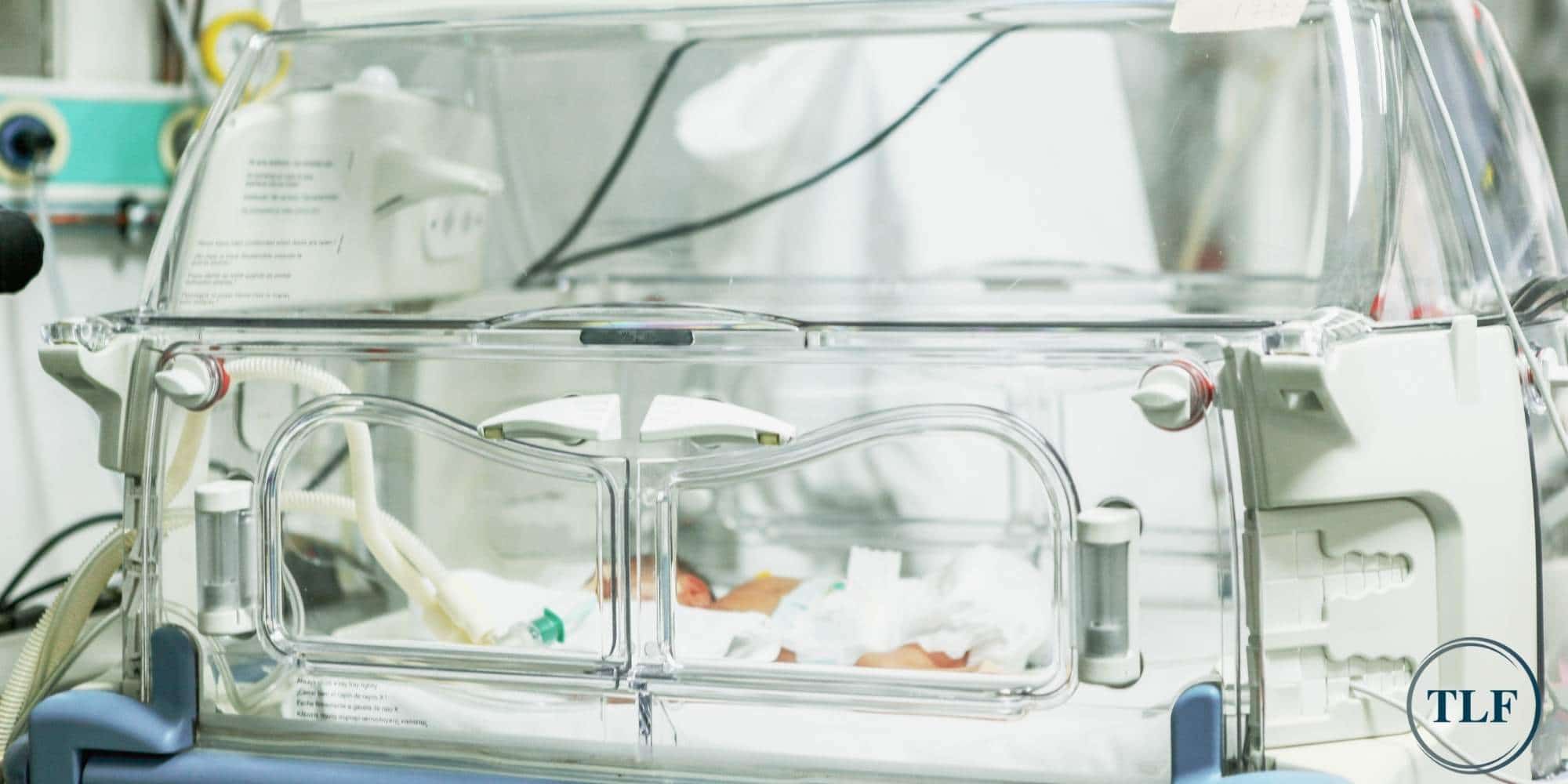Putting Our Knowledge And Experience To Work
Home » Birth Injuries » Brain And Whole Body Cooling Errors
Failure to Cool Following Hypoxic-Ischemic Birth Injury
Brain and Whole-Body Cooling Errors
Lack of oxygen to a child during the neonatal period can be disastrous, potentially resulting in cerebral palsy and other serious long-term issues. To mitigate the consequences of lack of oxygen, doctors are beginning to intentionally induce hypothermia in babies after childbirth when there are clear signs of lack of oxygen. In many cases, hypothermic therapy has had positive results and reversed the effects of a child’s HIE.
For newborns suffering oxygen deprivation at birth, cooling therapy or induced hypothermia is the only known treatment that can limit the extent of brain damage and potentially spare the child from developing cerebral palsy or other serious birth defects. Failure to order the cooling therapy can lead to serious injuries and even wrongful death.

If your child has been injured from a lack of oxygen during birth or by a failure to prevent injury from that lack of oxygen with head or whole-body cooling, our skilled medical malpractice and personal injury attorneys are here to protect your rights. Contact the Ohio and Kentucky injury lawyers at The Lawrence Firm, PSC online or by telephone at 800-698-4054 to arrange a free consultation today.
What is Cooling Treatment for Newborns?
When a baby becomes asphyxiated during labor and delivery, meaning they do not receive enough oxygen or blood flow to the brain, a serious birth injury called hypoxic-ischemic encephalopathy (HIE) may occur. You may also hear an HIE diagnosis referred to as birth asphyxia, perinatal asphyxia, neonatal encephalopathy, or fetal hypoxia. Hypoxic-ischemic encephalopathy typically develops over several hours after the baby’s lack of oxygen or blood supply, which means the responding medical team must work fast to reverse any permanent brain damage that may occur.
One of the most effective ways to reverse the effects of a child’s HIE birth injury is a relatively new treatment called neonatal therapeutic hypothermia. This is a type of cooling treatment that purposely induces mild hypothermia in the child. It works by reducing the baby’s body temperature, which has been shown to counteract the damage caused by hypoxic-ischemic encephalopathy. (See our blog post: What is Cooling Therapy for Newborns?)
Labor Emergencies That May Lead to HIE
There are several potential medical conditions that may force the mother to go into emergency labor and delivery, which may, in turn, lead to restricted blood flow to the baby’s brain. Some of these emergencies include:
- Uterine Rupture: A uterine rupture may occur during vaginal birth. It is when the uterus tears open, allowing the baby to slip into the mother’s abdominal cavity. This can essentially suffocate the unborn child, significantly increasing the risk of death or hypoxic-ischemic encephalopathy.
- Umbilical Cord Prolapse: This labor emergency occurs when a prolapsed umbilical cord drops through the mother’s open cervix before the baby makes it to the birth canal. The umbilical cord is then compressed between the infant’s body and the mother’s pelvic bones, leading to oxygen deprivation in the child.
- Preeclampsia: Many pregnant women are at risk of developing dangerously high blood pressure leading to conditions known as preeclampsia or pregnancy-induced hypertension (PIH). This condition can lead to premature birth and other delivery complications which may increase a child’s risk of developing hypoxic-ischemic encephalopathy.
- Placental Abruption: A placental abruption is a serious pregnancy complication that may present itself when the placenta separates from the uterus before birth. This abruption can deprive the baby of the necessary nutrients and oxygen supply they need.
- Amniotic Fluid Embolism: Amniotic fluid embolism is a rare complication, but one that can be incredibly serious and life-threatening to both the mother and baby. This occurs when the amniotic fluid surrounding the baby somehow enters the mother’s bloodstream.

Cooling Therapy for Hypoxic Ischemic Encephalopathy
When an infant’s brain cells are deprived of oxygenated blood and receive a limited blood flow, the metabolism of the cells declines into an unsustainable oxygen state. This forces the brain to produce toxic chemicals that can seriously damage the baby’s brain. An infant suffering from fetal hypoxia requires treatment immediately. If a medical professional does not remedy this situation quickly enough, it can lead to permanent brain injury and developmental delays in the child.
Fortunately, a hypoxic-ischemic brain injury is not necessarily an immediate or irreversible birth injury. It takes place as a series of chemical reactions that occur over the span of several hours until it becomes a permanent injury and leads to things like cerebral palsy and other birth injuries. Still, medical providers must act quickly and take preventive measures to minimize permanent brain damage through therapeutic hypothermia. In these cases, the sooner the therapy is administered, the better.
Therapeutic hypothermia can be accomplished either through a cooling blanket or a cooling cap. The goal of both methods is to bring the baby’s core body temperature to approximately 92°F for 72 hours, or three days, after birth. The brain cooling treatment should be initiated within six hours after birth and should only be performed on full-term or late pre-term infants, meaning they made it to at least 36 weeks in the womb. Of course, this treatment should also only be applied to infants who sustained mild to moderate brain damage following an HIE diagnosis. If your child met these criteria and was a perfect candidate but your medical provider failed to administer cooling therapy that may potentially have reversed severe brain damage, you may be entitled to compensation through a medical malpractice lawsuit.

How Does Brain Cooling Therapy for Newborns Work?
When there has been a clear indication of fetal distress due to oxygen deprivation or lack of blood flow to a newborn’s brain during delivery, medical professionals must act fast to address the situation. This is where brain cooling therapy comes in.
The technique works by placing a cooling cap on the infant’s head or by placing him or her on a blanket that circulates cool water. The cooling process should bring the baby’s temperature to around 91.4 – 92.3°F, and they must remain at this temperature for 72 hours. This lowers the body’s metabolic rate and allows the cells a chance to recover from the birth injury. During this time, the infant must be appropriately monitored. Respiratory and cardiovascular support may be needed, and the child should be screened and treated for any other conditions that may present themselves.
Following the neonatal cooling treatment, the infant will slowly be re-warmed back to normal body temperature, which is approximately 98.6°F. This part of the treatment must also be handled with extreme care, as warming the entire body and restoring circulation too quickly can lead to what is called a reperfusion injury. This may further damage the baby’s tissue and cells.
As you can see, neonatal therapeutic hypothermia treatment must be administered quickly and with extreme care. Failure to provide this necessary treatment, or even errors made while attempting to provide it, can indicate a clear instance of medical negligence and make way for a medical malpractice lawsuit.
Uncovering Instances Of Malpractice
If hypothermia treatment was ordered because medical negligence caused the baby to suffer brain damage, this may very well be a case of medical malpractice. In other cases, doctors fail to order cooling therapy when it would have been the best form of treatment to prevent newborn brain damage. In these cases, the child can develop disabilities that last a lifetime. If either of these situations occurred and ultimately led to serious damage to your baby’s brain or even wrongful death, we encourage you to speak with our Cincinnati and Covington medical malpractice attorneys right away.
At The Lawrence Firm, we are experienced in handling a range of birth injury cases, including those involving brain and body cooling treatments. We’ll examine all of the relevant details, including why the cooling treatment was needed in the first place. If we find that therapeutic hypothermia was needed due to a brain injury caused by a medical error, or if the therapy was not administered when it should have been, we will work to prove this breach of duty that led to your child’s injury. To learn more about malpractice cases involving therapeutic hypothermia, call a birth injury attorney from our firm at (800) 698-4054 today.

Why You Need an Experienced Covington Birth Injury Attorney from The Lawrence Firm
If your baby suffered birth asphyxia due to medical malpractice during labor and delivery and/or was not given the appropriate treatment to reverse the effects, you may be able to file a lawsuit against the responsible medical provider. Should you choose to bring a claim, we highly encourage you to first reach out to our experienced Ohio and Kentucky birth injury lawyers at The Lawrence Firm. Our legal team is ready and willing to support and guide you through the process, help you gather evidence for your case, and fight for you and your baby’s justice in the courtroom. We will do this by collecting medical records, consulting with medical experts, and presenting proof of the medical mistakes that led to your baby’s injuries.
Though compensation may not help reverse your baby’s injury, medical malpractice lawsuits can help cover the costs of treatment that may be associated with the injury and can hold the liable parties accountable for their negligent actions.
Top Birth Injury Lawyers in Ohio and Kentucky
At The Lawrence Firm, PSC, our Ohio personal injury attorneys handle a broad range of medical malpractice cases, including brain and whole-body cooling errors and other serious birth injuries. Serving clients in northern Kentucky and southwest Ohio, our lawyers are determined to help our clients obtain justice and compensation for their losses.
If your child has suffered a brain injury due to a doctor’s failure to order cooling therapy, our lawyers are here to protect your rights. Contact us online or by telephone at 859-578-9130 (for Kentucky clients) or 513-651-4130 (for Ohio clients) to arrange a free consultation and establish a formal attorney-client relationship with a knowledgeable Kentucky or Ohio medical malpractice attorney at The Lawrence Firm today.
Practice Areas
You Pay No Fees Unless We Win!
We are happy to offer a free consultation to evaluate your case. If you hire us as your legal counsel, we will represent you on a contingency-fee basis. You will pay no attorneys’ fees unless we recover financial damages.
